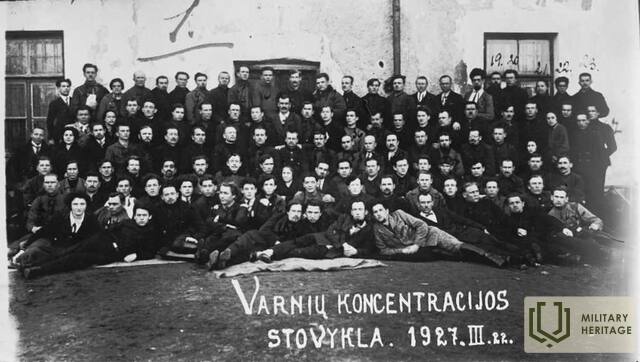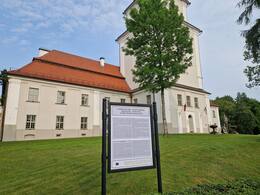Varniai Camp: Where Communists and Christian Democrats Played Chess
The Varniai concentration camp, which operated from 1926 to 1931, became a special place where communists, Christian Democrats, and even petty hooligans were imprisoned together - anyone who could pose a threat to the Smetona regime.
"The cells were huge, they could hold 30 or more people. Inside, wooden bunks were lined up in two rows throughout the room, and you could only pass along the edges of the walls," - this is how former prisoner and communist Boleslovas Baranauskas described Varnius.
The camp's population grew rapidly - at the beginning of 1927, 120 people lived here, and by the end of the year, 187. Over five years, more than a thousand people were imprisoned here. Among them were prominent figures: former Minister of Finance, leader of the Christian Democrats Petras Karvelis, Chairman of the Labor Federation Dr. Kazimieras Ambrozaitis, and founder of the Social Democrats Andrius Domaševičius.
You could get into Varniai for a pittance - "it was enough to say a bad word about A. Smeton or the Government at the wrong time and place, and you could immediately be sent to Varniai." At the beginning of the camp, even petty hooligans and vagrants were sent here.
The prisoners' daily routine was not particularly strict. During the day, they walked freely around the yard, read, and played chess, and their cells were usually not locked. They prepared their own meals, chopped firewood, stoked the stoves, and maintained order in their cells.
However, the communists were outraged by this procedure. B. Baranauskas stated that "the removal of the internees from work and the lack of activity were the result of the administration's deliberate choice to psychologically crush hardworking individuals from the proletariat."
When the camp was closed in 1931, even the authorities admitted its ineffectiveness - the communists were said to be "well fed, well maintained, and felt quite well" here, and they even agitated other prisoners.
Related timeline
Related topics
Related objects
Museum of the Diocese of Samogitia
The Samogitian Diocesan Museum is a division of the Samogitian Museum "Alka", established in 1999 in the former Varniai Samogitian Seminary building, built in 1770.
The museum presents the artistic, historical and memorial heritage of the Samogitian (Medininkai) Diocese and the Telšiai Diocese (since 1926). The museum is housed in the building of the former Samogitian seminary, built in the 18th century for the administration of Tsarist Russia.
The seminary operated until 1864. After the uprising of 1863-1864, the seminary and part of the diocesan building were transferred to the Russian Empire's army and began to be reconstructed, adapting them to a new - military - purpose, which the seminary building would serve for several subsequent decades. In 1871, the Don Cossack regiment, which was transferred to the 33-building complex formed in Varniai, remained in Varniai until 1905.
After regaining independence, the Lithuanian Army Discipline Company and the Eighth Infantry Regiment of Kaunas Duke Vaidotas were based in this place. During the interwar period, the Varniai concentration camp operated in the museum buildings (1927-1931). During the Soviet era (1947), the Varniai secondary school was located here, later the building was transferred to the Varniai village vocational technical school. After the restoration of Independence, in 1995. the bell tower and the original roof structure, typical of the late Lithuanian Baroque, were rebuilt. In 1999, the building was transferred to the Samogitian Diocese Museum.






